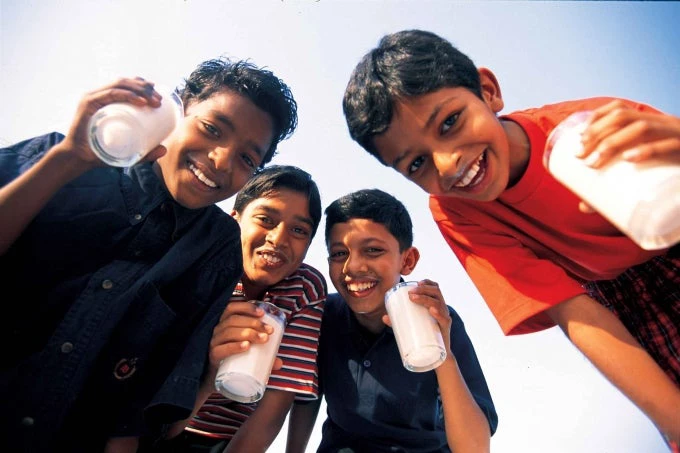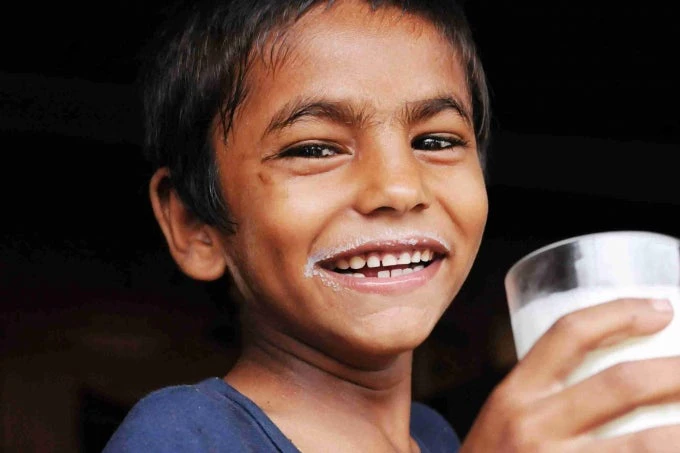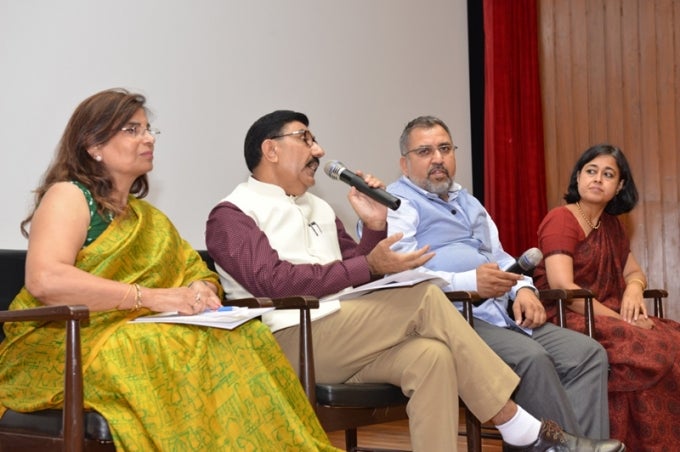
Micronutrient deficiencies, especially Vitamin A and D, are prevalent in India.
Yet, these deficiencies -- often referred to as ‘hidden hunger’ -- go largely unnoticed and affect large populations.
Night blindness, a condition afflicting millions of pregnant women and children, stems from low intake of foods rich in essential nutrients like Vitamin A.
Budget constraints limit access to nutrient-rich foods for many families, who are unaware or unable to afford a nutritious diet.
National programs help supplement diets with Iron and Vitamin, but their scope is too narrow to adequately address these deficiencies.

Fortified Milk Helps Increase Vitamins Intake
When fortified with vitamin A and D, milk, which remains a staple for many Indians, can help alleviate dietary deficiencies when supplementation is not available.
Food fortification is a relatively simple, powerful and cost-effective approach to curb micronutrient deficiencies. It is in general socially accepted and requires minimal change in existing food habits.
The process is inexpensive and costs about 2 paisa per liter or about one-tenth of a cent. And because it only adds a fraction of daily recommended nutrients, the process is considered safe.
For these reasons, food fortification has been successfully scaled up in some emerging economies.
However, except for salt fortification with iodine, India has not yet achieved large-scale food fortification.
With India’s rapidly growing dairy industry, large-scale milk fortification of Vitamins A and D is a robust vehicle for increasing micronutrients intake across the population.
Launching India’s Milk Fortification Project
To that end, the South Asia Food and Nutrition Security Initiative (SAFANSI) is piloting a large-scale milk fortification project to help Indian families better access micronutrient-rich foods. India’s National Dairy Development Board (NDDB) will coordinate implementation and produce guidelines and training to fortify milk.
On September 2017, SAFANSI, TINI and NDDB hosted a milk fortification workshop that brought together more than 90 participants including representatives from over 50 milk federations, unions, and producers.

The one-day workshop was an opportunity to discuss experiences in milk fortification in India, principally from Mother Dairy and Jharkhand Milk Federation.
During the workshop, NDDB released a booklet on milk fortification, which includes standard operating procedures for milk fortification and the national standards for fortification set by the Food Safety and Standards Authority of India (FSSAI).
Looking ahead, the Tata Trusts’ India Nutrition Initiative is partnering with NDDB to provide technical and financial assistance to selected milk federations, unions, and dairy companies to drive the milk fortification project forward.
The project aims to fortify 2 million metric tons (MTs) of milk, reaching more than 30 million people. NDDB will also share outcomes of this pilot for fortified milk and options for its scale-up throughout India.


Join the Conversation